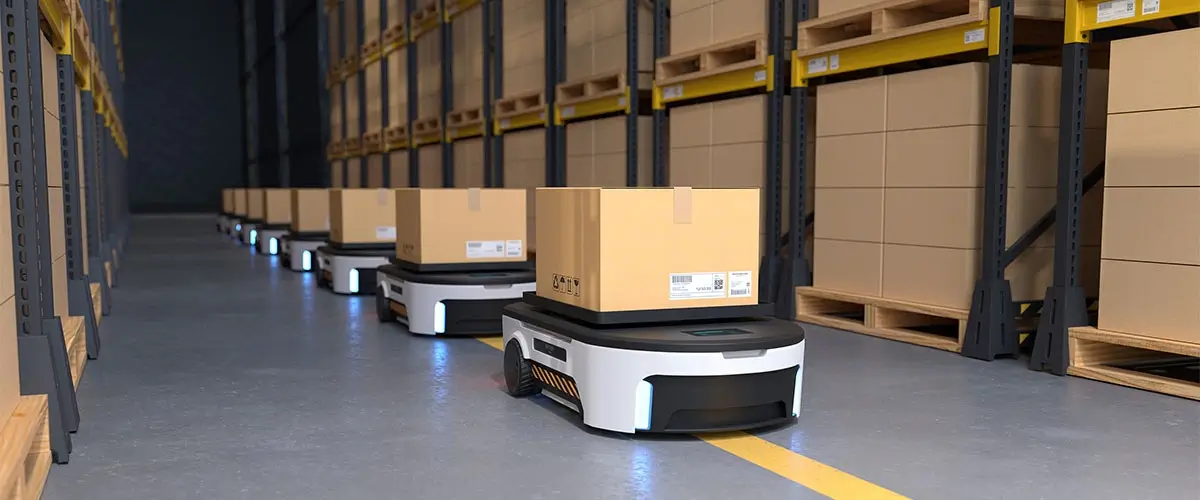This shift in consumer behavior likely had an impact on your operations. Maybe you had to extend your hours to meet shipping demands or struggled to keep your shelves stocked. You may have even seen some clients go under while new clients have come on board.
But is your warehouse keeping up?
The demand for warehouse space is growing and it is more important than ever to ensure your operations are running smoothly and efficiently, and ready to grow with rising demand.
Enter WMS warehouse management system software.
Contents
Who should use a WMS?
Warehouse management systems (WMS) manage the movement and storage of inventory within a warehouse, from receiving and putaway to picking, packing, and shipping. A good WMS can also provide reports and insights on how you can optimize inventory movement within your warehouse based on real-time information.
If you are involved in B2B, B2C, or DTC fulfillment operations, a WMS will allow you to serve your clients more effectively and efficiently. WMS software is not just for large or multiple warehouse operators; small- and medium-sized warehouses will also benefit from improved inventory management and handling that will set you up for future growth.
Why a WMS will benefit my operation
Manual operations come with a certain level of risk. These risks could include returned orders, inaccurate inventory counts, or high labor costs. Despite what Thomas Jefferson claimed, it’s not always true that “with great risk comes great reward.” In fact, taking unnecessary risks with your warehouse operations could cost you money and eat into your profits.
A high-quality WMS warehouse management system (like Logiwa’s) will allow you to automate and streamline your operations, improve productivity, and serve your clients and customers more effectively. A cloud-based WMS warehouse management system will allow you to monitor jobs and workflow from anywhere on a mobile device and generate reports that enable you to monitor and improve inefficiencies.
Unlock a personalized tour of Logiwa IO
Key facts about WMS
If you’re still not convinced that now is the perfect time to implement a WMS in your operations, let’s look at some facts.
Real-time visibility from receiving to shipping
A good WMS will provide real-time visibility from the moment a product arrives at your warehouse to the moment it’s delivered to your customer’s door, including:
- Automation of inbound logistics and optimization of inventory locations and easy-to-configure directed putaway algorithms to optimize inventory based on criteria critical to your warehouse efficiency…no coding required!
- Smart picking to speed up the picking process and reduce dead or expired stock.
- Access to real-time inventory for 100% order accuracy and exception creation.
Optimize your employees’ work
With walking path optimization, employees can save time and ship more products. Smart picking paths can map the best pick-and-pack patch through your warehouse based on proximity, product weight, or fragility and can make real-time adjustments when exceptions arise.
Logiwa’s WMS synchronizes data across your entire interface so the inventory numbers you see on your dashboard are what your employees see on their devices – no more time spent searching for products that aren’t on your shelves.
Scale your business as much, or as little, as you want
We’re well aware that demand for warehouse services can fluctuate throughout the year, depending on the season or world events. With a warehouse management system, you can scale up your operations quickly to meet demand. A WMS allows you to establish key performance indicators to improve things like order fill rate, delivery timelines, inventory carrying costs, and labor costs, letting you improve your operations while setting you up for successful growth.
If you’re moving to a bigger warehouse soon, it could be the perfect time to implement a WMS. While this may sound like a daunting task (moving and implementing a new system? Are you kidding me?), it’s the best time to do so. It’s the perfect time to assess the needs of your growing business, take advantage of a clean slate to take a closer look at the evolving WMS environment, consider all options, and find a system that will integrate properly with your current warehouse manager system.
We know that you can’t afford any downtime in your business and that you’ve heard horror stories of WMS implementations gone wrong, costing hours of lost time and significant amounts of money. With Logiwa, we can get you up and running in as little as four weeks, so you can concentrate on serving your clients and customers.
If you’re interested in learning more about warehouse management systems and how to integrate one into your growing business, contact our sales team for a free demo.
FAQs
How long does it take to integrate Logiwa’s WMS?
We can have your warehouse up and running in our WMS software in as little as four weeks. Need to expand your system as your business grows? Add new functionality and applications with simple clicks, no coding required.
What are the main features of warehouse management system software?
The main features of a warehouse management software are barcode scanning, inbound operations (receiving, directed putaway),Outbound operations (order picking, order packing, order shipment), integration capabilities such as API, EDI.
We’re moving to a new warehouse. Is now a good time to integrate a WMS?
If you’re moving to a new warehouse, or adding additional warehouses to your operations, it’s the perfect time to think about a new WMS. You can assess the needs of your growing business, take advantage of a clean slate to take a closer look at the evolving WMS environment, consider all options, and find a system that will integrate properly with your current systems.
Will adding a WMS to my operations require additional headcount.
No, there is no additional headcount needed when you start using a WMS. In fact, you’ll see greater efficiency from your employees, letting you better serve your clients and customers, and increasing your ability to grow your business.





